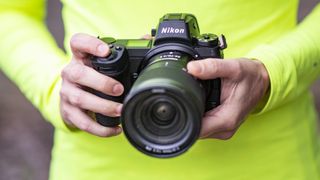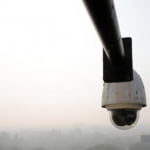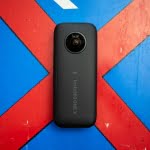
Until quite recently choosing the best full-frame mirrorless camera wasn’t that difficult, simply because there were only a few such cameras available.
Sony pretty much had the market to itself, with its A7-series cameras catering for enthusiasts and professionals working across many applications, and its A9 model giving sports photographers the most credible alternative to flagship DSLRs.
Then Canon and Nikon joined the party, before Panasonic pitched in with its own offerings. Now, on top of some more left-field models from Leica, the market has expanded to give photographers, videographers and those working across both fields many alternatives at a variety of price points.
Many of these systems are still getting established, so what should you look for? There’s obviously the sensor at the heart of the camera, but it’s also worth looking at the current lens options available, and what lenses manufacturers have said are in development.
After all, there’s no point in buying a great camera if the lenses you’d like to use don’t exist, or or are out of your price range. It’s also a good idea to check whether you can use existing lenses from your current system, as this is often an option.
If you capture bursts of images frequently, make sure to check not only the burst rate but also the burst depth – the first spec tells you how many images you can shoot per second, while the second tells you how long you can keep shooting for in terms of the number of frames. Continuous focus may decrease these figures, so look out for that in the spec sheet too.
If you capture a lot of video, you’ll typically be better served by a camera with a lower-resolution sensor rather than one with lots of megapixels, but make sure to check what shooting options you have in terms of video frame rates and ports for microphones and headphones. You might also want to check out our separate best 4K camera guide for more video-focused suggestions.
The design and resolution of electronic viewfinders (EVFs) and LCD screens vary considerably across these models. Some EVFs are large and detailed, others less so. The LCD screens also sometimes tilt, sometimes swivel and occasionally do neither, although almost all now are touch-sensitive – great for things like setting the focusing point.
It’s quite likely that many more excellent options will join the cameras featured below before the year is up, but what stands out from the current crop?
We reckon the Sony A7 III is the best full-frame mirrorless camera right now, with its blend of a sound 24MP sensor, integrated image stabilization, excellent video quality and rugged build making it a perfect all-rounder at a sensible price. But there are several other options that might be a better match for your specific needs – here are the best full-frame mirrorless cameras you can buy right now.
Contents
Best full-frame mirrorless cameras in 2019
1. Sony Alpha A7 III
Third time lucky? We sure are – this is a gem of a mirrorless camera
Sensor size: Full-frame CMOS | Resolution: 24.2MP | Autofocus: 693-point AF | Screen type: 3.0-inch tilt-angle touchscreen, 921,000 dots | Maximum continuous shooting speed: 10fps | Movies: 4K | User level: Enthusiast/expert
It’s not the newest camera here, but the Sony A7 III is very much the Goldilocks choice right now, with just the right balance of features and performance at its price point. The 24MP sensor offers masses of detail, great low-light performance and more modest file sizes than higher-megapixel rivals, while the body is rugged without being bulky. It also houses a five-axis image stabilization system that brings great flexibility at slower shutter speeds, while video quality is top-notch too. It’s already fallen in price since its launch to make it very competitive against newer arrivals, and with an exhaustive array of lenses available you shouldn’t have much bother finding the right bit of glass for whatever it is you want to shoot. We love it.
2. Nikon Z6
Nikon kicks off its Z system in style with this corker
Sensor: Full-frame CMOS | Resolution: 24.5MP | Autofocus: 273-point AF | Screen type: 3.0-inch tilt-angle touchscreen, 2,100K dots | Maximum continuous shooting speed: 12fps | Movies: 4K at 30p | User level: Enthusiast/expert
The Z6 is the more junior of the two cameras that kicked off Nikon’s Z system, the other being the Z7. So why does it get our vote? Well, unless you need the Z7’s higher-resolution sensor you’ll find that the Z6 does pretty much everything the Z7 can do, and for less money – in fact, with a faster burst shooting rate and a better setup for video recording, it can actually do a little more here and there. Handling is great, build quality is excellent, and the viewfinder is gorgeous to look through – and you also get a built-in five-stop image stabilization system, which gives both these cameras a massive advantage over Nikon’s DSLRs. Sure, the XQD card format isn’t for everyone, but it does mean the camera will take advantage of the CFexpress format that’s just around the corner. Right now, the Z6 is running a very close second to the mighty Sony A7 III.
3. Sony Alpha A7R III
A resolution beast that’s dripping with A7-series goodness
Sensor size: Full-frame CMOS | Resolution: 42.4MP | Autofocus: 399-point AF | Screen type: 3.0-inch tilt-angle touchscreen, 1,440,000 dots | Maximum continuous shooting speed: 10fps | Movies: 4K | User level: Expert
This is the more senior of Sony’s A7 camera triplet, and it stands out for its 42.4MP sensor resolution (hence the ‘R’ in the name). This means plenty of detail, and will get you as close as you’re going to get right now to realizing the full optical excellence of Sony’s premium G Master lenses. Building on the foundations set out by the equally popular A7R and A7R II, this third iteration combines 4K video and five-axis image stabilization with a beautiful 3.69 million-dot viewfinder, and 10fps burst shooting with autofocus and auto-exposure maintained throughout. You also get a hybrid AF system, dual card slots, Eye AF and masses more. It’s not perfect, and we’d love to see better battery life in the next-generation version of the model, but for the pro who needed masses of detail it’s a sterling choice nonetheless. The model was recently updated by the 61MP A7R IV, but its a near-certainty that Sony will continue to have the A7R III in its camera stable for the time being, just as it has done with all previous A7 models.
4. Nikon Z7
Nikon’s D850 in mirrorless form? That and a whole lot more
Sensor size: Full-frame CMOS | Resolution: 45.7MP | Autofocus: 493-point AF | Screen type: 3.2-inch tilt-angle touchscreen, 2,100,000 dots | Maximum continuous shooting speed: 9fps | Movies: 4K | User level: Expert
The Z7 is currently the flagship option in Nikon’s Z system, with its main draw being a 45.7MP sensor. That’s the same as the established and highly respected D850 DSLR, so what exactly does anyone switching from that camera to this one gain? Lots, as it happens: a big, bright and detailed electronic viewfinder; a 2.1 million-dot tilting touchscreen; sensor-based image stabilization, and 4K video recording, all inside a much smaller and lighter body. On top of this you get a 493-point AF system that covers a much larger area of the frame than the D850’s, and a very respectable 9fps burst shooting option. We found lots to love when we came to review this camera, and we still rate it just as highly.
5. Canon EOS RP
Sometimes bigger isn’t better, as the EOS RP proves
Sensor: Full-frame CMOS | Megapixels: 26.2MP | Autofocus: 5,655-point AF | Screen type: 3-inch vari-angle touchscreen, 1,040,000 dots | Maximum continuous shooting speed: 5fps | Movies: 4K | User level: Enthusiast
An alternative to the flagship EOS R (featured later in this list) that arrived right at the start of Canon’s latest mirrorless line, the EOS RP is simply a much better option for many more people right now. While not quite as powerful in some areas, it’s smaller, lighter and a heck of a lot cheaper, and it’s blessed with very good autofocus, a generous buffer and a great touchscreen that flips out all the way to face the front. It wouldn’t be our first choice for video, and the current native lens selection is limited, not to mention somewhat incongruous with such a petite body – but you can use masses of EF lenses through an adapter, so it’s a no-brainer for existing Canon users looking to make the switch to mirrorless without dropping a fortune in order to do so.
6. Sony A9
Pricey but powerful – and it’s just got better too
Sensor size: Full-frame CMOS | Resolution: 24.2MP | Autofocus: 693-phase-detect points | Screen type: 3.0-inch tilt-angle touchscreen, 1,440,000 dots | Maximum continuous shooting speed: 5fps (20fps with e-shutter) | Movies: 4K | User level: Expert
Right now, if you’re the kind of photographer who relies on the blistering speed and focusing performance of the Canon EOS-1D X Mark II or Nikon D5 and you’re looking to jump over to mirrorless, the A9 is your best bet. With 20fps burst shooting (with autofocus and no viewfinder blackout), a hybrid AF system that uses 693 phase-detect AF points, and a buffer that lasts for an astonishing 241 (compressed) raw frames, this powerhouse will keep on top of whatever action you need to shoot. Plus, with the release of version 5.0 firmware, the camera has now gained an even stronger autofocusing system. No only does this keep track of moving subjects to a degree we’ve not seen before from a mirrorless camera, but it manages to do so even when obstacles pass in front of them. It’s not cheap by any measure, but it justifies that cost with a stellar performance.
7. Sony A7 II
The last-generation model is now a bargain
Sensor: Full-frame | Resolution: 24.2MP | Autofocus: 117-point AF | Screen type: 3.0-inch tilt-angle screen, 1,228K dots | Maximum continuous shooting speed: 5fps | Movies: Full HD | User level: Intermediate/expert
Sony made some key improvements to the original A7 to craft this successor, and while it misses out on a few of the perks of its A7 III successor, its spec sheet shows it to be highly relevant to today’s photographer. Alongside its 24.3MP sensor with five-axis image stabilization, the A7 II packs a 2.36 million-dot EVF, a hybrid AF system, and Wi-Fi and NFC to enable you to start pinging out your pictures in no time. It’s also well worth considering that, although you can use rival bodies with many older lenses, the native Sony lens line for this system is far more established, and has plenty of interest from third parties developing their own compatible options.
8. Canon EOS R
Canon’s current mirrorless flagship packs some neat tricks
Sensor: Full-frame CMOS | Megapixels: 30.3MP | Autofocus: 5,655-point AF | Screen type: 3.15-inch vari-angle touchscreen, 2,100,000 dots | Maximum continuous shooting speed: 8fps | Movies: 4K | User level: Enthusiast/professional
Canon’s EOS RP, featured earlier in this list, might be the better option for budget-conscious users and those not needing flagship performance, but the EOS R is Canon’s most advanced mirrorless camera to date. On top of what the EOS RP offers, it boasts a larger and more detailed electronic viewfinder together with a better LCD screen, a higher-resolution sensor and faster burst shooting. The larger body also better supports the fairly hefty lenses released in the accompanying RF line so far, while the various adapters released by Canon ensure that you can continue using your EF lenses without any issues, with autofocus and auto-exposure working as you’d expect.
9. Sony A7S II
It’s showing its age a little, but it’s a top choice for video and low light
Sensor: Full-frame | Resolution: 12.2MP | Autofocus: 169-point AF | Screen type: 3.0-inch tilt-angle screen, 1,228K dots | Maximum continuous shooting speed: 5fps | Movies: 4K | User level: Intermediate/expert
Although many feel that the Sony A7S II is overdue an update – it’s been on the market for over three years – if outright resolution isn’t a concern but low-light shooting or video is your thing, this is still a camera to pop on your shortlist. At its heart is a 12.2MP sensor that can be ramped up to ISO102,400 natively and ISO409,600 on its expanded setting, while 4K video captured with full pixel readout and five-axis image stabilization sit alongside. On the downside, its contrast-detect-only AF system and lack of a touchscreen show the camera’s age somewhat, although these shortcomings haven’t prevented it from remaining a favorite among pro photographers who need that huge dynamic range and superlative low-light performance.
10. Panasonic Lumix S1
Beastly but very capable, with the best EVF bar none right now
Sensor size: Full-frame CMOS | Resolution: 24.2MP | Autofocus: 225-point AF | Screen type: 3.2-inch tilt-angle touchscreen, 2,100,000 dots | Maximum continuous shooting speed: 9fps | Movies: 4K | User level: Intermediate/expert
Kicking things off for Panasonic’s S series, along with the S1R, the S1 is the more affordable option, but still packs some seriously impressive tech. There’s the 24MP full-frame sensor that performs brilliantly when shooting stills and 4K video, together with a sensor-based image stabilization system that does exactly what it should, and does it well. Operation is swift, build quality is excellent, and it’s no exaggeration to say that the viewfinder is stunning – it’s definitely the best right now (the same unit is inside the S1R). It’s just a little too big and heavy, and somewhat awkward to operate at times, while the autofocusing system is a touch behind the competition. But this is still a model that delivers far more to get excited about than many others manage to.
[“source=techradar”]











